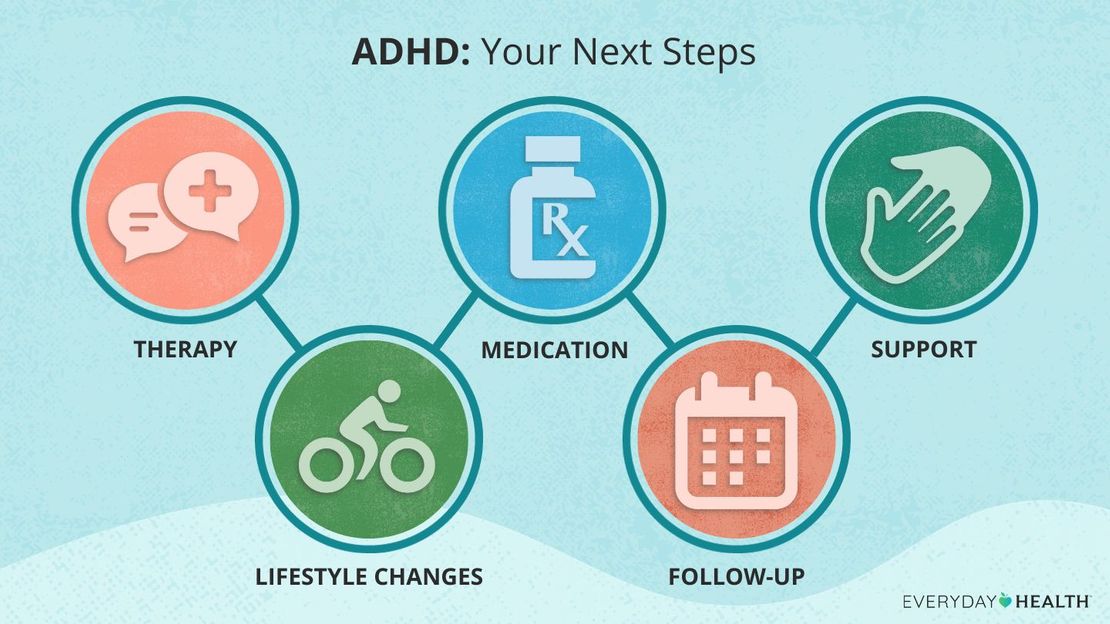Developing an ADHD-Friendly Meal Plan
Attention deficit hyperactivity disorder (ADHD) is a commonly diagnosed behavioral condition in children. And research shows that adopting an ADHD meal plan pdf catered to their needs can help minimize undesirable symptoms.
How Diet Impacts ADHD
No definitive cause for ADHD exists, but science does recognize diet as an influential factor. That's why health professionals often recommend dietary changes alongside other therapies for managing ADHD.
Certain nutrients directly impact brain function, affecting focus and behavior. Meanwhile, some ingredients appear to exacerbate hyperactivity and attention issues characteristic of ADHD.
Developing an ADHD-Supportive Meal Plan
When developing an ADHD meal plan pdf for any child, let alone one with attention and behavioral conditions, stick with wholesome, balanced nutrition. Here are key considerations:
- Emphasize fruits, vegetables, lean protein, fiber-rich grains
- Stay well-hydrated with plenty of water
- Add in brain-boosting healthy fats like nuts, seeds, avocados
- Eat more fatty fish high in omega-3s like salmon
- Choose anti-inflammatory spices like turmeric, ginger, cinnamon
- Limit added sugar, ultra-processed fare
- Always maintain proper portion sizes for age/size
Foods to Avoid with ADHD
Science has made connections between ADHD symptoms and certain food additives and ingredients common in modern diets. Limiting the following can help minimize behavioral issues:
- Artificial food dyes - Associated with hyperactivity
- Added sugars - Contribute to unstable blood sugar affecting behavior
- Milk proteins - Some research links excess dairy and ADHD
- Simple carbs/sugars - Rapid spikes and drops in blood sugar can negatively impact kids' attention and behavior
- Trans fats - Found in many fried and processed foods
- Food intolerances/allergies - An undiagnosed sensitivity could exacerbate symptoms so track reactions
ADHD Meal Planning Guidelines and Principles
These key principles form the foundation for any ADHD meal plan pdf. Aligning child's meals and snacks with the following supports health all around:
Regularly Scheduled, Balanced Meals and Snacks
Establishing a consistent daily eating schedule helps regulate energy and mood for any child. But for kids with ADHD, it becomes even more crucial.
Set designated breakfast, lunch, dinner and 1-2 scheduled snack times. Offer nutritionally balanced meals and snacks delivering carbs, protein, healthy fats, and produce. Keeping blood sugar steady via properly timed, portioned feedings minimizes unpredictable behavior.
Ample Omega-3s From Fish, Nuts, Seeds
Omega-3 fatty acids directly support cognitive skills related to learning, focus and memory. And research connects supplementation with minimizing ADHD symptoms.
Add omega-3 rich foods like salmon, tuna, walnuts and chia seeds into an ADHD meal plan pdf. DHA and EPA omega-3s found primarily in seafood offer particular brain benefits.
Fruits, Vegetables, Whole Grains
Produce, whole grains and other fiber-rich plant foods form the foundation of any nutritious diet. They deliver ample vitamins, minerals and antioxidants supporting health.
These whole foods also stabilize blood sugar and energy levels. Choose produce in a rainbow of colors for maximum phytonutrient range. Offer fresh or frozen instead of canned for lower sodium.
Replace refined grains like white bread and rice in an ADHD meal plan pdf with fiber-rich whole grain choices like oats, brown rice, quinoa and 100% whole wheat pasta.
Lean Protein At Every Meal
Protein provides crucial amino acids needed for expanding young minds and bodies. When creating an ADHD meal plan pdf, include quality protein sources at breakfast, lunch and dinner.
Eggs, Greek yogurt, nuts, beans, tofu, cheese, milk and a wide variety of lean meats like poultry and fish offer excellent proteins.
Dairy Alternatives If Suspected Sensitivity
Some studies report higher rates of cow milk antibodies associated with ADHD. While more research still needed, discussing dairy elimination with a doctor might be worthwhile.
If eliminating milk, choose unsweetened dairy alternatives like almond milk, coconut milk or oat milk fortified with calcium and vitamin D. Wait a few weeks and monitor changes while slowly reintroducing dairy.
Eliminate Artificial Ingredients
Avoid all artificial flavorings, colors and preservatives in foods as much as possible when ADHD is a concern. Research indicates they negatively impact attention and behavior.
Read labels carefully and steer clear of these unnecessary additives, especially common culprits like Red Dye 40, Yellow Dye 5 and sodium benzoate.
Discourage Sugar and Simple Carb Intake
Kids naturally crave sweets but refined sugars and refined grains digest too quickly. They send blood sugar rocketing up rapidly. Then comes the inevitable crash, bringing moodiness, irritability and lack of focus.
Limit added sugar from things like sodas, fruit drinks, cereals, candy, etc. Focus on whole food options to fulfill carb choices like fruits, beans, vegetables, whole grains instead.
Sample ADHD-Supportive Weekly Meal Plan
Pulling together all those researched dietary approaches into an actionable ADHD meal plan pdf provides families living with ADHD concrete ways to optimize nutrition. Below offers a sample weekly outline hitting key goals:
Monday
Breakfast: Greek yogurt topped with nuts, apple slices, cinnamon. Hard-boiled egg for protein kick.
Lunch: Leftover salmon salad sandwich on sprouted whole grain bread + baby carrots and cucumber slices.
Afternoon snack: Cheese stick + orange wedges
Dinner: Veggie & black bean enchiladas with avocado slices + brown rice + sauted spinach.
Tuesday
Breakfast: Banana almond milk smoothie with almond butter for protein punch.
Lunch: Hummus, baby carrots, red pepper slices, thick sliced whole grain toast triangles.
Afternoon snack: Popcorn sprinkled with nutritional yeast for B vitamins.
Dinner: Burrito bowls with brown rice, seasoned ground turkey, shredded lettuce, salsa, avocado.
Wednesday
Breakfast: Overnight oats topped with sliced strawberries & chopped walnuts. Hard-boiled egg on the side.
Lunch: Whole grain pita pockets stuffed with chicken salad made with Greek yogurt and chickpeas + baby carrots.
Afternoon snack: Apple slices dipped in sunflower seed butter.
Dinner: Sheet pan roasted lemon-garlic salmon with oven roasted potato wedges and broccoli.
Thursday
Breakfast: Veggie scramble with diced bell peppers, mushrooms, spinach and cheddar cheese. Berries on the side.
Lunch: Garden salad topped with roasted beets, avocado chunks, sunflower seeds and grilled chicken strips.
Afternoon snack: Celery sticks with cashew butter and raisins.
Dinner: Thai veggie coconut curry with tofu over brown rice. Glass of milk for calcium.
Friday
Breakfast: Whole grain waffle topped with smashed berries and Greek yogurt. Turkey bacon on the side.
Lunch: Leftover Thai tofu coconut curry with brown rice. Baby carrots for crunch.
Afternoon snack: Sliced apple sprinkled with cinnamon alongside string cheese.
Dinner: Veggie & quinoa stuffed peppers with marinara sauce. Served with milk.
Support Your Child's Success Through Diet
The right ADHD meal plan pdf goes a long ways towards minimizing attention deficits and hyperactivity. Align meals and snacks with science-based dietary approaches for addressing behavioral symptoms.
Emphasize balanced whole food nutrition including brain-boosting healthy fats. Limit potentially problematic ingredients like additives and refined sugars. And maintain proper consistency with scheduled feedings.
Collaborating such supportive diet strategies alongside other therapies gives your child their best shot at ADHD symptom management and overall wellbeing.
FAQs
What foods should be avoided with ADHD?
Food dyes, added sugar, excess dairy, simple carbs, fried/processed foods, and potential allergen triggers should be limited in an ADHD-supportive diet.
Is an ADHD-tailored meal plan effective?
Yes, adopting nutrition strategies to minimize ADHD symptoms alongside other therapies can be very effective for behavioral management.
How does diet impact ADHD?
Certain nutrients directly affect factors like focus, mood, and impulse control. Meanwhile problematic ingredients can exacerbate hyperactivity and attention deficits.
What are the most important parts of an ADHD diet?
Scheduled balanced meals, omega-3s from fish and nuts, plenty of fruits and vegetables, lean proteins, and limited sweets/artificial additives.
Disclaimer: This article is for informational purposes only and does not constitute medical advice. Always consult with a healthcare professional before starting any new treatment regimen.
Related Coverage
While no direct link exists currently, there are some theories about how chronic Adderall use could influence cancer risk over time. Learn about the science....
ADHD can make showering difficult. But using reminders, hygiene checklists, and creating a sensory-friendly bathroom space can help build showering habits....
Foster a healthy lifelong partnership through open communication, compromise and regular intimacy dates that nurture emotional and physical connection....
Embrace the power of superfoods and elevate your conscious lifestyle. Discover 15 nutrient-dense powerhouses that offer a wealth of benefits for your body, mind, and spirit....
Knowing when to replace bras is important for support and comfort. Signs it's time for a new bra include visible wear and tear, lack of support, size change, discomfort....
Protein snacks like yogurt, nut butter, cheese and eggs provide kids with sustained energy and nutrition for growth and development. Discover the best snacks....
Wellbutrin and Vyvanse are sometimes used together to treat adult ADHD. Wellbutrin enhances focus and counteracts stimulant side effects....
From emotional dysregulation to executive function problems, ADHD bad days happen. But self-care, adjusting expectations, knowing triggers, and support help cope....
ADHD requires an ongoing commitment to integrated treatments, self-care practices, community support, and advocacy to manage symptoms and thrive....
With Adderall shortages causing access issues, many patients are changing to Vyvanse instead. Learn proper transition guidelines between these ADD/ADHD medications....







